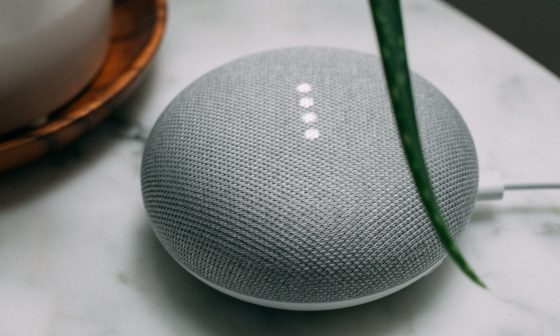On 14th September 2023, Google started a tsunami called the Helpful Content Update, a sitewide classifier to reduce the “unhelpful” content from Google search results. It continued for days, sweeping off pages and pages of useless, mass-generated content off the web.
That’s it. Gone!
Traffic started dropping like crazy for many sites. For some, the drop was as big as 90%. By the time anyone could make sense of what was happening, entire websites were left desolate. (It even led to some layoffs).

If you also were on the receiving end of Google’s curse, first – breathe. It’s possible to recover with consistency. I spoke to marketers and SEO experts who were in the same place as you. Up next, I’ll discuss how to recover from HCU based on their insights.
What went down: Google’s helpful content update
Google first rolled out the Helpful Content System in 2022, but the update in September 2023 had some major changes and impact on low-quality sites. It aims to reward pages with original, authoritative, and trustworthy information that communicates the topic to users. Pages with thin, low-value-add content will be ranked lower.
What kind of sites were penalized?
Low-quality content farms, scraped or rewritten content, and pages bloated with ads and affiliate links declined severely. A lot of such content was also created using AI. And hence the cry about Google cracking down on AI.
“[Client] went from having 1200-1400 clicks per day from Google purely to going down to 300-400 clicks per day. The content that was hit most was the content that hadn’t been updated in a while and the content that was missing supporting content.
There were some content pieces where they had written a decent blog post, but because they didn’t have supporting content to interlink to and cover the main topic from all angles, we saw a massive drop in these blog posts.”, shares Phillip Stemann, an SEO consultant for a travel company.
It emphasizes how Google is leaning towards in-depth, research-driven content that provides a comprehensive answer to the user query. Another thing: we noticed the algorithm now values production quality too – assessing AV assets, formatting, and overall ease of content consumption.
Will AI content work?
Umh, not in the typical sense that you expect it to. Google doesn’t completely dislike AI. It has a feud with useless content that doesn’t improve the quality of SERP.
In fact, Google removed the words ‘written by people’ from its helpful content definition. This may indicate AI content is okay, or any content is okay, as long as it adds substantial value to the web.

It just so happened that owing to its speed, websites started using AI content to flood the web with regurgitated crap that offered no real value to the reader. It’s the usual marketing song – doing more is doing better. Which is not always right, at least not when it comes to content creation.
“Our blog was penalized in the Sept HCU update. At that time we had over 1.2 million in traffic which dropped to around 600k.
It was very evident to us that our language blog was punished for our AI generated content. Our team jumped in with both feet producing reams of content with AI thinking perfect grammar and context would be enough. It wasn’t.”, says Natalia Dávila Merlo, content marketing manager at Ling.
If you fell for such tactics or were just a victim of circumstance, you will now need to completely overhaul your content strategy.
Yep, tear it down to pieces and recreate. But it’s not as hectic as it sounds, don’t worry. Let me show you how to get back on track.
How to recover from the HCU update
Here’s how you can slowly start recovering from Google’s helpful content update:
#1 Assess the damage
First, make a complete list of pages that got hit. You will get the performance data in your Google Search Console.
- Compare monthly traffic changes in the Oct-Dec 2023 period. Anything over 10% MoM drop in traffic post-September means something went seriously wrong.
- Instead of coupling all these pages together, I’d suggest creating different buckets. It can be either based on severity of impact (10-30% drop, 30-50% drop, Over 50% drop) or based on topic clusters too. This will help you prioritize which content to refresh and optimize first.
- Next, you need to check if the impact was only across a few clusters or was seen across your site. If the latter, you may need to come up with a new content strategy altogether.
#2 Figure out what went wrong
Chances are you probably know why a certain type of content was penalized on your site. The first step is to obviously stop using any blackhat tactics that you may have been using to generate content. It could be:
- Entirely relying on AI to generate content for you, without human check.
- Automatically rewrite or “spin” content to create derivative articles. The quality is often nonsensical or poor.
- Creating low-quality doorway pages optimized solely for specific keywords in order to attract search engine traffic
- And other such SEO blackhat practices – you know the gist.
Apart from this, look for any glaring readability issues in the content – large chunks of paragraph, no authentic perspective, highly generic and repetitive information, etc.
If everything else seems fine, check if the user experience of the page was causing problems. For example, page speed, lack of visual assets, glitchy layout elements, or improper navigation on the page.
#3 Compare with pages that ranked better than you
Now that you have some idea of which pages got the worst end of it. Figure out where exactly the traffic went. Google’s first page for these keyword clusters will tell you what type of content is currently ranking. Study it carefully. Some things you should pay attention to in the top ranking content include:
- Content structure, including titles and headings
- Relevance and depth of content
- Linked resources and content
- Use of audio-visual assets
- Authenticity and expertise of the author
- Overall user experience of the page
“I started to create a topical map to find if we were missing supporting content to interlink to. While building the topical map, I did a competitor gap research as well to cover their industry fully.”, adds Phillip.
Next, you gotta reverse engineer the kind of content that works now. Up next, we’ll discuss tips based on each of the factors we discussed.
#4 Keep your content concise and specific
Have you ever googled the fried chicken recipe on Google and got hit with a 1000-word monologue on how fried chicken is a global favorite?
That’ll be pretty annoying right?
Or hear me out – if I search for ‘How to edit a pdf’ and an article starts something like this…

I’d much rather close the tab and go elsewhere. And Google understands this. Google doesn’t want its users to go elsewhere. it wants content that answers users’ query in a specific and complete manner. So, here’s what you should do:
- Make note of exactly what question your content tries to answer.
- Tick off all possible sub-queries and related queries your user might have.
- Check if your content answers the question thoroughly and to the point.
- Keep intros crisp and targetted at the problems/benefits relevant to your user.
- Always use a table of content with jumptags.
- And cut all unnecessary or irrelevant sections (you can always add them to a separate blog and link internally).
#5 Rethink the content structure
Make your content easily consumable. That’s a big thing for Google. Try to highlighte the value it provides to readers right away.
You can use strategic subheadings (H2, H3 tags) to break up text into logical sections and make it skimmable. But don’t follow a one-size fits all approach. Modify the structure and create different types of sections based on intent.
For example, you can include a methodology section if it’s a research-based piece, explaining in detail how conclusions were reached.
Apart from the basic structure,
- Insert tables, charts or graphs to visually represent complex data, trends or comparisons.
- Close each post with a summary or conclusion reiterating the main points and utility for readers.
- Formatting goes a long way too, sparingly use bolding, italics, blockquotes and line breaks to aid skimming.
- You can check the readability of your content using tools like Grammarly or Hemingway.
- And you can also include HTML structured data like FAQ schema for Q&A-style articles.
#6 Focus on the user’s query, not just ‘keywords’
Google is strictly against creating content for search engine. And trust me, they’re quite capable of telling when you are writing to the search bot instead of your user.

“The type of content that is not helpful to the user’s query gets hit the most. I created a site for courier tracking pages which redirected the user to different platforms. But the service wasn’t as useful since you could track within Amazon or other marketplaces. The site completely went down after september.”, says Sreeram, an SEO consultant.

Although keyword research gives you a good idea of what user is asking, don’t make your entire content about those keywords. Dig into what the user needs to know. Figure out any related queries or sub-topics that will help them. And never compromise on readability to stuff in keywords.
#7 Get to the point… fast
Don’t drag a point on and on until your reader loses focus. If some SEO guy told you word count matters for Google, please dump them.
Google has specifically asked creators if they inflate word count thinking Google cares. Guess what? They don’t.
Natalia adds on how they started recovering from HCU at Ling,
“Our traffic fell by 50% after the September HCU. Since then, while we haven’t removed those articles, we have spent a huge effort rewriting them and adding real human insights. We’ve also stopped publishing at such a high rate which is a red flag for Google.
Some tips we’ve used to bring our traffic back up to over 860k are:
- Get rid of the fluff
- Get straight to the point – don’t make your reader scroll for ages to get to what they landed on your page for (I’m talking to you, every annoying recipe page on the internet)
- Have a few static images that do not distract from the purpose of your content
- Use internal links”
So stop writing those pages-long intros and ‘build-ups’ before you provide users with some real value. Keep your content concise and to the point.
#8 Establish author credibility as per E-E-A-T guidelines
A lot of expertis believed, according to Google’s EEAT guidelines – Experience, Expertise, Authoritativeness, and Trustworthiness mean that authorship of the article will play a major role in SEO.
But by authoritativeness, Google just means whoever’s writing the article should be credible, well-informed on the topic, and have a perspective based on experience. This helps build trust in the information.
By author credibility, we don’t mean adding an author name and bio and calling it a day. (Google doesn’t consider author bios as a ranking factor, it’s a misconception). But author bios and credibility can help SEO indirectly by enhancing the over user experience of your site.
Apart from bios, here’s how you can establish credibility:
- Within the article, reference past projects, research or work you’ve produced in the space.
- Support points with credible external references like academic studies or industry data.
- Quoting recognized experts or authoritative voices also boosts credibility.
- Let the article content demonstrate knowledge rather than making explicit credibility claims.
#9 Fix your schema markup
Schema is the language Google uses to read, categorize, and understand the content on your website. Sophisticated schema on your website indicates you took time to implement structured data correctly, thus lending you credibility. You can test your pages through Google’s Schema Markup Testing Tool or other schema validators.
“Schema is something overlooked by several SEO [folks]. They think that applying a simple option on your SEO tool is schema. But actually, you need to write a well-detailed schema that explains about your page as much as possible.”, adds Sreeram, as he shared his secrets for doubling the traffic of a client website over 6 months.
But don’t overdo it. Excessively complex schema can cause issues too. So, start simple and try removing nested markup and other complexity if you see errors.
#10 Assess your production value
How much effort you put into making your content consumable and appealing matters to Google. And it’s also a cornerstone of the Helpful Content Update. Few things you should do:
- Include original, high-quality images that visually support the topic. Optimize with descriptive alt text. Images break up walls of texts, engage users, and demonstrate your expertise.
- Embed videos related to the subject matter to vary content formats. Short 1-2 minute videos work the best.
- Linked to directly downloadable assets like checklists, calculators, templates that provide utility (keep gated content to minimum, not everything has to be about leads)
- Turn written posts into podcast episodes to diversify formats and you can link them to the page as well.
#11 Create targeted and diverse content
When we say ‘content’, don’t just think blogs. Think value packaged in different forms. Experiment with different formats and themes to find out what works for you as well as your user. Don’t write with random ‘traffic’ in mind, create content targeted at hyper-specific interests or locations.
Here’s how a probiotic supplement brand did it to engage with their local audience –
“Our company is adding value to our customers; not just offering products: we have strengthened our website by adding supplement guides; we update fitness tips, nutrition advice for the needs of our local geo-targeted community.
Google’s latest update will serve to further differentiate us from anyone else in our space who’s not offering helpful user-first content, a strategy we followed in the last quarter, which led to a 15 percent growth in page views for our local content and an average three-position climb in localized search rankings, both of which are indications that we are headed in the right direction.”, says James Wilkinson, CEO of Balance One Supplements
#12 Keep monetization in check
This is more specific to niche sites that use their traffic to monetize. Although Google isn’t against ad placements, make sure the ads are not hampering the user experience or cluttering the page too much. This can result in bounces which isn’t a good indicator to the search engines.

#12 Read Google’s quality checklists
Google is quite transparent when it comes to informing creators about the kind of content that works. Make sure you read the complete Helpful Content System update thoroughly. Be hawk-eyed and dissect each and every line carefully to understand what works.
Good Read: Google’s list of content and quality questions
#13 Prune Your Content
It’s part of refreshing and updating the existing content on your website to make it more helpful to the user. Make a list of all the articles that are performing poorly. Find out if some of the content needs changing or shortened. Cut out any unnecessary fluff from the content. Rewrite the sections that need more actionable insights or updated information.
Gael Breton helped one of his clients recover about 85% of the traffic lost, simply by pruning 60% of their existing, irrelevant content.

List of important SEO factors to consider
Zippy did a case study on important SEO factors associated with brands that won or failed with major Google updates. Take a look, and see if you spot the ones you need to prioritize.

Summing Up…
And finally, you need to be patient. Recovery from a manual hit isn’t a fast and easy process. But slow, consistent improvements will start showing results. Most marketers we spoke to followed these simple guidelines and started getting some respite from Google after a couple of months. While there’s no guarantee your traffic will shoot back up again to the same levels, you will still start seeing a gradual improvement.
P.S. You might need to invest heavily in rewriting old content while making sure you are also publishing new stuff. Be prepared.
Synup is your local SEO partner – no BS, no fluff, only actionable advice. Learn with Synup.


